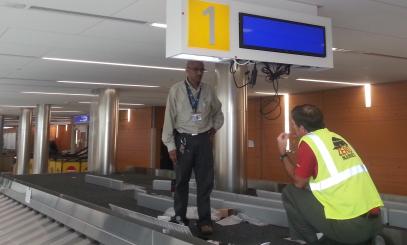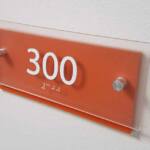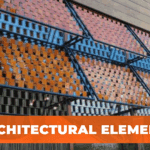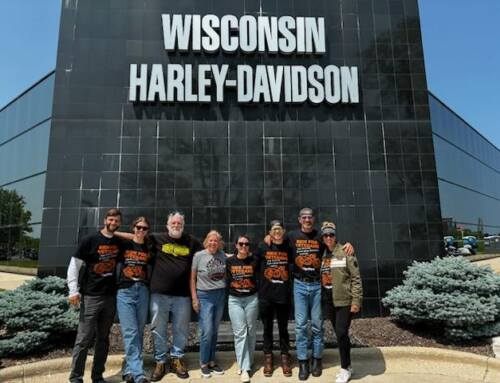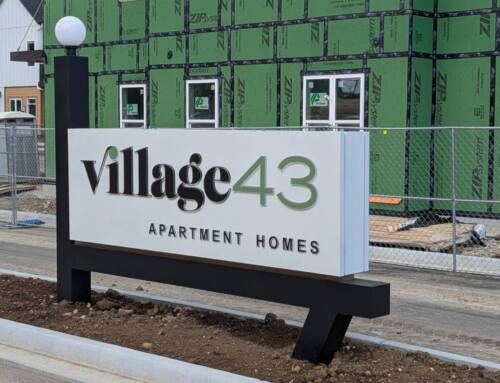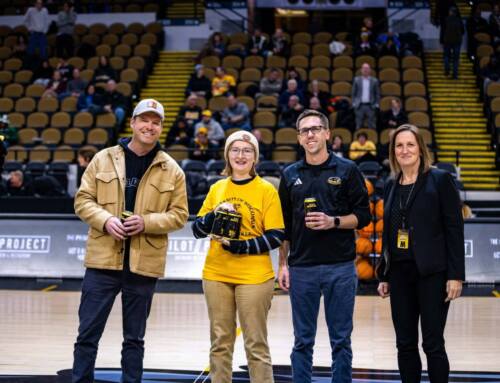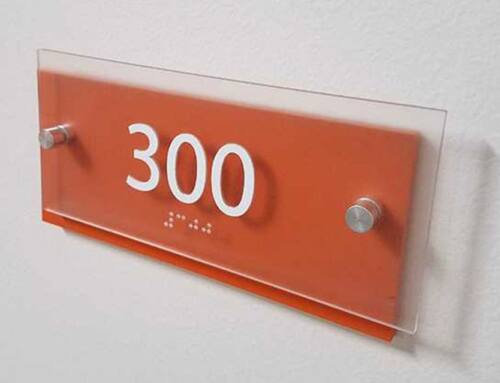Believe it or not, the sign industry gets us to where we want to go. And it’s personal. Here’s how.
When airline passengers at General Mitchell International Airport (GMIA) in Milwaukee want to find their luggage, they want the easiest route to the claim area. Without way-finding signs, think of the chaos of a plane full of passengers having to wonder around in search of the carousel.
Serving Two Masters
Great way-finding sign systems serve two masters simultaneously. They get passengers to the right baggage claim area, the food court and the rest rooms, but they also blend into the background when passengers don’t need them.
It means satisfied travelers for the folks that manage the airport. For them, guiding passengers through the airport is paramount. However, they don’t want the signs to define the architecture or the look and feel of the environment.
My hat is off to the designers who identify the right placement for the signs and draw attention to the signs without making them gaudy or distracting. The quick response to this might be to install bright, Vegas-style lighting. However, that’s not going to work, there is a style unique to way-finding signs. They help visitors get to where they want to go while not distracting them. Allowing them to remain focused on the task at hand. It’s true for any application: airports, hospitals, colleges, office buildings, parks and hotels. For the GMIA project, we were given excellent design, created by the team at Engberg Anderson. Finding an architectural firm that specializes in the application is critical. In most cases, the firm knows more than the facility manager or owner, as should be.
The criterion doesn’t end there. The signs need to have just the right lighting effects. Way-finding signs also have to be durable and rugged enough for a heavily traveled area. Another recommended design element is how to deal with vandalism. The objective here is to make them vandal proof, a daunting task, in its own right.
Getting What You Want
Our clients want it on budget, on time and they want quality mechanical design. We address these potential issues. Such things as, supporting structure details, solid mechanical design, illumination research and testing, color variation based on medium used, etc… If the signs only look good for a month but have mechanical failures (and vice versa), they’re not meeting the objective.
You’ll probably get all three, but on most projects these have to be prioritized. If we’re building the Tajmahal, quality might be key and fluctuation in time or budget have less of an impact. But if the project is publicly funded, budget is probably king. Time or deadlines might be driving the bus. For every day an airport terminal is shut down, planes can’t land or take off and that impacts revenue, schedules, costs…and it, once again becomes personal.
Way-finding signs come in just about every format: some illuminated, some not. Some are designed for the interior, and some for the exterior. ADA style. Monument. Ceiling mounted. Pylon, you name it.
That Sign May Save Your Life
Perhaps the most important is the set of signs that identify Emergency Exit locations, Evacuation Routes, Hurricane shelters, etc…We often take Emergency Route signs for granted, until that moment in time, when they’re likely to become the strongest adversary we have. Most likely saving us from whatever disaster we’re in. How do I get out if a fire starts? This also has to be communicated to blind passengers as well, through the use of brail. Probably the biggest reason way-finding signs are extremely personal!
Conclusion
When it comes to signs, we, as a culture, just expect direction. However, I believe signs affect our lives far more than we realize. Think about it. They effect us on a much deeper level then you may have ever thought. Personal! Finding our way around in mundane situations and during emergencies, it’s highly personal. And how does your message get communicated to thousands of people effectively and efficiently? That’s the challenge we help solve.
-Adam
